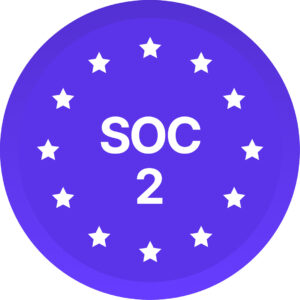The $100+ Billion Question
In our research with a healthcare organization, we witnessed one of the most comprehensive inclusion training programs we’d ever seen. Over 18 months, they spent $2 million delivering unconscious bias training to more than 15,000 employees. Completion rates were impressive: 94% of staff finished the modules. Post-training evaluations were glowing. Leadership considered it a success.
Then we measured the results.
Inclusion scores had actually declined by 1.2 points.
This wasn’t an isolated incident. Despite organizations spending over $100 billion annually in the U.S. alone on training and development (Training Magazine, 2024), much of it focused on culture transformation, the fundamental metrics remain stubbornly unchanged. Gallup’s latest research shows only 21% of workers globally report feeling engaged at work, actually declining from 23% in previous years. Innovation rates have stagnated. Turnover continues to plague even companies with “great cultures.”
The uncomfortable truth? Most culture initiatives fail not because they’re poorly intentioned, but because they’re poorly structured. They confuse motion with progress, programs with performance, and activities with architecture.
McKinsey research confirms that 70% of organizational transformations fail, with the majority of failures attributed to culture-related issues rather than strategy or execution problems.
Through our work with hundreds of organizations and analysis of feedback from over 200,000 employees, we’ve identified the four systemic reasons why culture initiatives fail—and more importantly, how to build culture infrastructure that actually drives performance.
The Programs vs. Systems Problem
Before diving into the four failure patterns, we need to understand the fundamental misunderstanding plaguing most culture work.
Performance = Culture × Development
Culture doesn’t just add to other investments, it multiplies them exponentially. When culture is strong, learning and development investments deliver breakthrough results. When culture is weak, even the best programs fall flat.
But here’s what most leaders miss: culture itself isn’t one thing. It’s a system of interconnected components:
Culture = Motivation × Inclusion
Where:
- Motivation = Purpose + Autonomy + Clarity + Recognition (the drive to excel)
- Inclusion = Belonging + Safety + Flexibility (the environment to thrive)
Most failed culture initiatives address only part of this equation—or worse, treat culture like a collection of activities rather than an integrated performance system.
Reason #1: Culture Theater Instead of Culture Infrastructure
The Pattern: Organizations invest in visible, feel-good activities while ignoring the systematic conditions that actually drive daily performance.
A major entertainment company perfectly illustrated this trap. When they identified issues around representation of people with disabilities, both in their content and internal culture—their response revealed everything about how companies actually prioritize culture work.
The content piece was addressed immediately. Directives were issued, guidelines updated, creators encouraged to include disabled characters. It was visible, measurable, and brand-aligned.
Meanwhile, the internal culture piece took a different path. After twelve months of developing comprehensive allyship toolkits to help employees support disabled colleagues: thoughtful, evidence-based resources addressing real workplace barriers. The program was quietly killed due to manager concerns about time and complexity.
The Result: Culture theater at its finest. The company could act on purpose when it was visible, but couldn’t invest in the systematic changes that would actually improve employee experience.
What Works Instead: Build culture as infrastructure, not atmosphere. Focus on the systematic conditions that determine how people feel, behave, and perform every day:
- Whether someone with a good idea can get it heard and implemented
- Whether managers give honest feedback and employees can receive it
- Whether high performers are developed and low performers are coached up or out
- Whether people understand how their work connects to outcomes and have autonomy to improve it
These conditions can be measured, managed, and systematically improved. But most organizations treat culture as vibes rather than variables.
Reason #2: Training Without Cultural Foundation
The Pattern: Rolling out programs that contradict existing cultural norms or systems, creating cognitive dissonance instead of behavior change.
The healthcare organization from our opening example fell into this trap. Their unconscious bias training raised awareness of problems without providing tools to address them. Managers became afraid to give feedback, worried about saying the wrong thing. Employees became newly conscious of bias but felt powerless to address it.
We see this constantly: companies mandate collaborative leadership training while maintaining promotion systems that only advance individual contributors. They invest in empathy training for customer service teams but don’t include supervisors who coach back to efficiency metrics that directly contradict the training.
The Multiplication Effect Breakdown: Training effectiveness depends on cultural foundation. Research shows that 60% of training transfer success depends on manager support, yet most programs ignore this critical factor. When training contradicts culture, culture wins every time.
What Works Instead: Ensure cultural readiness before launching training programs:
- Assess motivation infrastructure: Do people have purpose, autonomy, clarity, and recognition?
- Check inclusion foundation: Is there belonging, safety, and flexibility to learn and apply new skills?
- Align systems: Make sure performance management, promotion criteria, and reward systems reinforce rather than contradict training content
- Activate managers: Train supervisors first and hold them accountable for supporting skill application
Reason #3: Measuring Activities Instead of Outcomes
The Pattern: Tracking completion rates, satisfaction scores, and program participation while ignoring whether behaviors change or performance improves.
A global financial services firm spent millions on leadership development programs but measured success through attendance and course evaluations. They had no data on whether participants actually became better leaders, whether their teams performed differently, or whether the organization’s leadership capability improved.
Meanwhile, participants left for “better opportunities” at 40% higher rates than peers—revealing that the programs were actually training people for jobs they’d take elsewhere.
The Vanity Metrics Trap: Most culture measurement focuses on inputs (how much we spent) and outputs (how many people participated) rather than outcomes (did performance improve?). This creates a dangerous illusion of progress while missing early warning signs of failure.
Recent data shows that companies spent an average of $774 per employee on training in 2024, yet only 12% of employees successfully apply new skills learned in training to their jobs, and 90% of new skills are lost within 6 months without proper reinforcement.
What Works Instead: Focus on performance outcomes, not program metrics:
Leading Indicators:
- Application rate: How many people use new skills within 30 days?
- Behavior change: Observable differences in how work gets done
- Manager reinforcement: Are supervisors supporting skill development?
- Cultural coherence: Do systems align with stated values?
Lagging Indicators:
- Performance improvement: Measurable outcomes in productivity, quality, innovation
- Retention: Do people with stronger culture experiences stay longer?
- Internal mobility: Are people advancing based on merit and capability?
- ROI: Can you connect culture investment to business results?
The construction company that successfully navigated a racially charged incident didn’t just implement training. They measured psychological safety quarterly, creating continuous feedback loops that helped them weather future cultural challenges and achieve better project outcomes.
Reason #4: Ignoring the Manager Multiplier Effect
The Pattern: Designing culture initiatives as if managers don’t exist, despite research showing they’re the primary determinant of employee experience.
Gallup research consistently shows that managers account for 70% of the variance in employee engagement. Yet most culture programs are designed around peer interactions, leadership messaging, or individual development—ignoring the people who translate culture intentions into daily reality.
A technology company rolled out empathy training for customer service teams but didn’t include supervisors. When representatives tried to implement new listening techniques, they were coached back to efficiency metrics that directly contradicted what they’d learned. The training message was clear, but the management message was clearer.
The System Activator Reality: Managers are culture’s operating system. Gallup research consistently shows that managers account for 70% of the variance in employee engagement. Yet most culture programs are designed around peer interactions, leadership messaging, or individual development: ignoring the people who translate cultural intentions into daily reality.
What Works Instead: Make managers the cornerstone of culture strategy:
- Train managers first: Leadership goes through programs before rolling out to teams
- Create manager toolkits: Provide concrete resources for post-training reinforcement
- Hold managers accountable: Include culture activation in performance reviews and promotion criteria
- Model from the top: Senior leaders participate as learners, not just sponsors
- Provide ongoing support: Regular coaching, peer learning, and skill refreshment for managers
They determine whether psychological safety exists, whether recognition happens, whether development opportunities are distributed fairly, and whether feedback flows effectively. Without manager activation, even perfect culture designs remain theoretical.
The CEO who participated in anti-harassment training as a learner, not just a sponsor, sent a powerful signal that culture change started with leadership accountability.
How to Avoid These Failures: The Performance Culture Blueprint
Organizations that avoid these four failure patterns don’t just run better culture programs, they build culture systems. Here’s how:
1. Start With Infrastructure Assessment
Before launching any culture initiative, diagnose your current performance infrastructure:
- Motivation Audit: Do people have clear purpose, appropriate autonomy, transparent expectations, and meaningful recognition?
- Inclusion Assessment: Is there genuine belonging, psychological safety, and practical flexibility?
- Development Evaluation: Are training and opportunity systems connected and effective?
- Manager Readiness: Do supervisors have the tools and accountability to activate culture change?
2. Design for Multiplication, Not Addition
Remember that Performance = Culture × Development. Design initiatives that strengthen both culture and development simultaneously:
- Connect training programs to career advancement opportunities
- Align recognition systems with development goals
- Build feedback loops between motivation and inclusion efforts
- Create measurement systems that track performance outcomes, not just participation
3. Create Systematic Reinforcement
Culture change happens through consistent reinforcement, not one-time events:
- Spaced repetition: Break learning into digestible chunks over 3-6 months
- Manager coaching: Regular check-ins to support skill application
- Peer accountability: Create groups that support behavior change
- System alignment: Ensure promotion, compensation, and recognition systems reinforce new behaviors
4. Measure What Matters
Track both experience data (how people feel) and outcome data (what happens as a result):
- Culture Analytics: Real-time dashboards showing motivation and inclusion trends
- Performance Correlation: Connect culture scores to business outcomes
- Early Warning Systems: Identify problems before they become retention crises
- ROI Calculation: Quantify the business impact of culture investments
The Future of Culture Work
The next wave of culture work isn’t about better programs, it’s about better systems. Organizations that understand culture as performance infrastructure rather than employee satisfaction will outperform those still running on feel-good initiatives.
This means:
- Systematic over sporadic: Building continuous culture development rather than quarterly events
- Multiplicative over additive: Creating conditions where culture amplifies other investments
- Performance-focused over perception-focused: Measuring business outcomes, not just employee sentiment
- Manager-activated over peer-driven: Recognizing that supervisors are the culture operating system
The companies avoiding the billion-dollar culture crisis aren’t the ones with the most elaborate programs, they’re the ones building the most effective systems. They understand that culture isn’t about what you do on Fridays or how you celebrate achievements. It’s about whether your people can perform at their best every day.
The question isn’t whether your organization needs culture change. It’s whether you’re building culture infrastructure that actually drives performance or just running another program that will join the pile of well-intentioned initiatives that didn’t stick.
Ready to build culture infrastructure that actually works? The Diversio Inclusive Culture Toolkit provides systematic assessment, targeted interventions, and performance measurement tools that help organizations avoid these four failure patterns. Learn more about our evidence-based approach to building performance culture.

